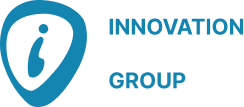As consumer behavior evolves, understanding which marketing avenues yield the best conversion rates is crucial for optimizing campaigns and achieving business objectives. Keeping informed of the performance of various marketing channels including TV, radio, email, social media, and search is of the highest importance for marketers as they seek to identify where and how to maximize their return on investment (ROI).
Email Marketing: High ROI and Direct Conversions
One of the most powerful tools for driving conversions, email marketing continues to provide high ROI and direct conversions. According to a study by Litmus, the ROI for email marketing can reach up to $42 for every $1 spent, making it a cost-effective channel for generating leads and sales.
Emails allow businesses to send personalized, targeted content directly to their audience, increasing the likelihood of engagement and conversion. A report by HubSpot found that segmented email campaigns can lead to a 760% increase in revenue. Campaign Monitor indicates that transactional emails have eight times more opens and clicks than any other type of email and can generate six times more revenue.
Key advantages of email marketing include:
- Personalization—Emails can be tailored to individual customer preferences, enhancing user experience and increasing the chances of conversion.
- Automation—Automated email sequences such as welcome series, abandoned cart reminders, and post-purchase follow-ups help to nurture leads and push them down the sales funnel.
- Segmentation—Marketers can segment their email lists based on user behavior, demographics, and past interactions, ensuring that more relevant content reaches the right audiences.
Search Marketing: Capturing Intent-Driven Users
Encompassing both search engine optimization (SEO) and pay-per-click (PPC) advertising, search marketing is highly effective in capturing users with strong purchase intent. By targeting specific keywords and phrases that align with user search behavior, businesses can attract qualified traffic that is more likely to convert.
According to a study by WordStream, the average conversion rate across all industries for Google Ads is 3.75% on the search network. BrightEdge reports that organic search drives 53.3% of all website traffic, demonstrating its importance for visibility and conversions.
Key advantages of search marketing include:
- Intent-driven traffic—Users who actively search for products or services demonstrate higher purchase intent, making them more likely to convert.
- Measurable results—Search marketing offers robust analytics and tracking capabilities, allowing marketers to measure conversion rates and optimize campaigns.
- Local search impact—For businesses with a local presence, optimizing for local search terms can significantly increase in-store visits and local conversions.
Social Media Marketing: Engagement and Brand Awareness
Social media platforms like Facebook, Instagram, LinkedIn, Pinterest, and X (formerly Twitter) offer great opportunities for brand engagement and audience interaction. Social media doesn’t have the highest direct conversion rates compared to search or email marketing, but it plays a vital role in the customer journey as it builds brand awareness and fosters relationships. A report from Hootsuite found that 73% of marketers believe that their efforts through social media marketing have been “somewhat effective” or “very effective” for their business.
Facebook: Engagement and Conversions
On Facebook, the average engagement rate for brands is about 0.08% per post, as reported by Hootsuite. Facebook’s algorithm prioritizes content that generates interaction, making it essential for brands to create engaging and interactive posts.
Facebook ads have an average conversion rate of around 9.21% across industries, according to WordStream. This relatively high conversion rate can be attributed to Facebook’s sophisticated targeting options, which allow marketers to reach specific demographics, interests, and behaviors. Approximately 94% of Facebook ad revenue comes from mobile devices, highlighting the importance of mobile-optimized ads and landing pages for conversions.
Instagram: Engagement and Conversions
The average engagement rate for brands on Instagram is around 1.68% per post, according to a report by Rival IQ. This higher engagement rate compared to other social media platforms is largely due to Instagram’s visual nature, the use of features like Stories and Reels, and the platform’s focus on photo and video content, which tend to drive more interaction from users.
Instagram’s conversion rate averages around 1.08%, as reported by Smart Insights. This is lower compared to Facebook, but Instagram is effective for brands that focus on visual engagement and influencer partnerships, which can lead to strong brand loyalty and eventual conversions.
Instagram’s shopping features including shoppable posts and Instagram Checkout have increased direct conversions on the platform. Over 130 million users engage with shopping posts every month, indicating the platform’s potential for e-commerce.
LinkedIn: Engagement and Conversions
On LinkedIn, the average engagement rate for brands is around 0.35%, according to a report by Sprout Social. This rate can vary based on the type of content shared, with video content typically receiving higher engagement than text-only posts or articles.
LinkedIn has an average conversion rate of 2.74%, which is higher than other social media platforms. This is largely due to LinkedIn’s professional user base and targeted business-to-business (B2B) advertising capabilities, making it especially effective for lead generation in professional services and business-to-business sectors. Also, LinkedIn’s native lead-gen forms have proven highly effective, with reports indicating that they can increase conversions by up to three times compared to traditional landing pages.
Pinterest: Engagement and Conversions
The average engagement rate for brands on Pinterest is around 0.10%, according to a report by Rival IQ. This relatively lower engagement rate compared to platforms like Instagram reflects Pinterest’s focus on discovery and planning, where users often browse and save content for future reference rather than engaging immediately with posts.
Pinterest users have an average conversion rate of 0.7%. Pinterest excels in driving high-quality traffic that often converts over time, especially for e-commerce businesses. It’s a valuable platform for retail and lifestyle brands. According to Pinterest, users are 2.3 times more likely to consider buying products they see on Pinterest compared to other platforms.
X: Engagement and Conversions
On X, the engagement rate is typically lower compared to other platforms, with an average engagement rate of 0.045% per tweet for brands. This lower rate is often due to the fast-paced nature of X’s feed and the sheer volume of tweets posted daily.
X’s average conversion rate is around 0.9%, possibly due to its shorter content lifespan and focus on real-time information. Promoted Tweets can have a 1-3% engagement rate, with conversion rates varying based on the quality of the offer and targeting precision.
Key advantages of social media marketing include:
- Targeted advertising—Platforms provide advanced targeting options based on demographics, interests, and behaviors, enabling precise audience reach.
- Influencer partnerships—Collaborating with influencers can extend reach and credibility, positively impacting conversions.
- Retargeting—Social media channels excel at retargeting campaigns, reminding users of products or services they’ve shown interest in, which can boost conversion rates.
TV Advertising: Broad Reach and Brand Credibility
Despite the surge in digital marketing, TV advertising continues to be a powerful channel, especially for building brand awareness and credibility. While TV may not directly drive conversions like search or email marketing, it influences consumer perception and can complement other marketing efforts by keeping brands top of mind.
A study by Nielsen found that TV ads drive an average lift of 13% in brand awareness and are a significant contributor to the overall media mix. Data from Marketing Charts indicates that combining TV with digital advertising can increase conversions by up to 60%.
Key advantages of TV advertising include:
- Wide reach—TV ads can reach millions of viewers simultaneously, making it ideal for broad audience campaigns.
- Credibility and trust—TV is often perceived as a more trustworthy medium compared to some digital channels, enhancing brand credibility.
- Integrated campaigns—TV advertising can be integrated with digital campaigns, such as promoting hashtags or website visits, creating a multi-channel experience.
Radio Advertising: Local Engagement and Cost-Effectiveness
While sometimes overlooked in the digital age, radio advertising remains a cost-effective way to reach local audiences. It’s particularly effective for businesses targeting specific geographic areas or demographics.
Radio’s ability to reach consumers during their commutes or at work provides unique opportunities to capture attention. The Radio Advertising Bureau (RAB) reports that radio reaches 93% of adults weekly, showcasing its extensive reach. A study by Westwood One found that radio advertising can deliver a $12 return for every $1 spent, indicating strong potential for ROI.
Key advantages of radio advertising include:
- Local targeting—Radio allows businesses to target local markets effectively, making it ideal for local service providers and retail businesses.
- Cost-effective—Compared to TV advertising, radio spots are generally more affordable, offering a good ROI for smaller budgets.
- Frequency and repetition—Repeated exposure to radio ads can reinforce brand messages, making them more memorable.
Sources:
- BrightEdge: Organic Search Traffic
- Campaign Monitor: Transactional Email Performance
- Hootsuite: Facebook Engagement Benchmarks
- Hootsuite: Social Media Marketing Effectiveness
- HubSpot: Email Segmentation
- Litmus: Email Marketing ROI
- Marketing Charts: TV and Digital Advertising Synergy
- Nielsen: TV Advertising Impact
- Pinterest Business: Conversion Insights
- Radio Advertising Bureau (RAB): Radio Reach Statistics
- Rival IQ: Social Media Industry Benchmark Report
- Smart Insights: Instagram Conversion Benchmarks
- Social Media Today: Twitter Engagement Statistics
- Sprout Social: Social Media Engagement Benchmarks
- Twitter Business: Advertising Metrics
- Westwood One: Radio Advertising ROI
- WordStream: Facebook Ads Conversion Rates
- WordStream: Google Ads Benchmarks
Further Thoughts
Each marketing channel—whether TV, radio, email, social media, or search—offers unique strengths and plays a distinct role in driving conversions. Email marketing excels in personalization and direct response, search marketing captures high-intent users, social media fosters engagement and brand loyalty, TV advertising builds broad awareness and credibility, and radio provides cost-effective local reach. For digital marketers, understanding the nuances of these channels and how they complement each other is key to designing effective, conversion-driven campaigns.
By leveraging data analytics and continuous testing, marketers can optimize their use of these channels to maximize conversions and ROI. The choice of channel often depends on the specific business goals, target audience, and budget, making a tailored approach essential for success in today’s multifaceted marketing landscape.
For more insights and innovative solutions in digital marketing, visit Innovation Direct Group.
#marketinganalytics #digitalmarketing #innovationdirectgroup


